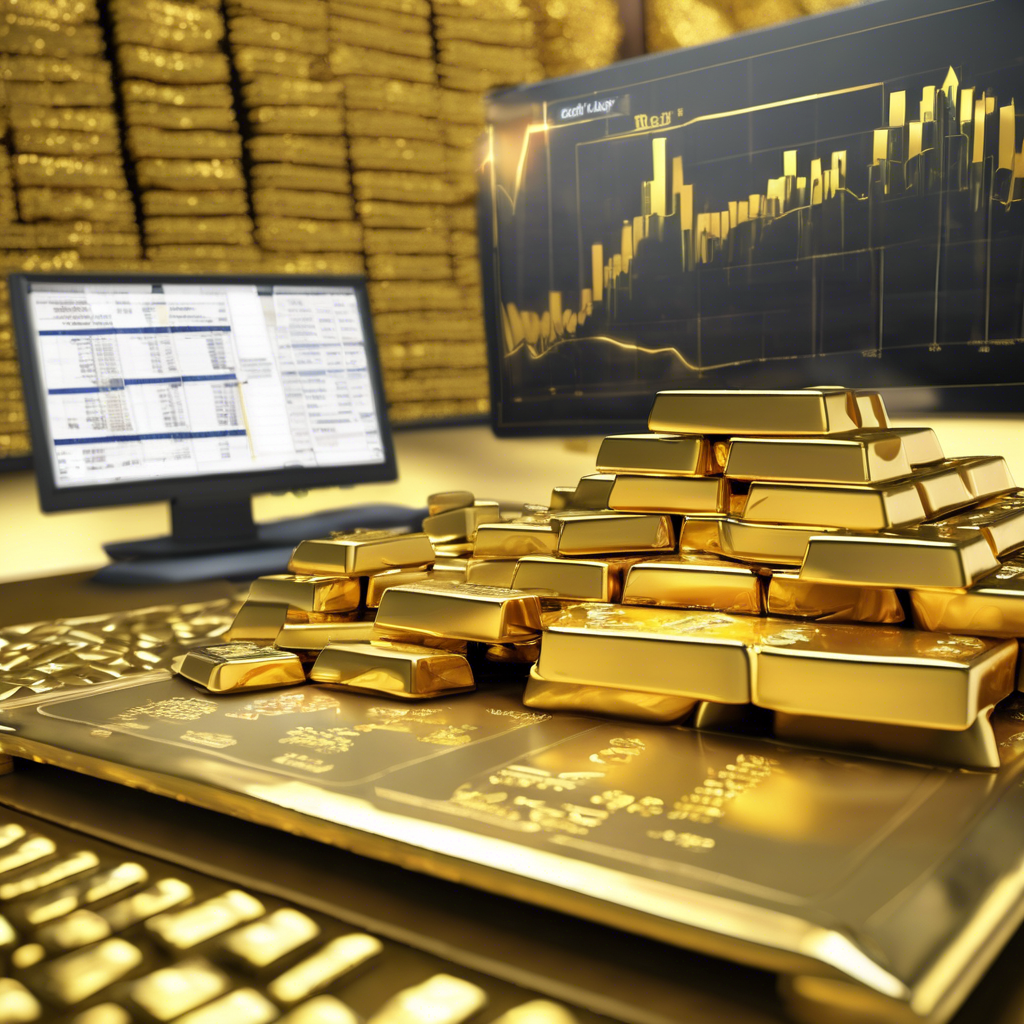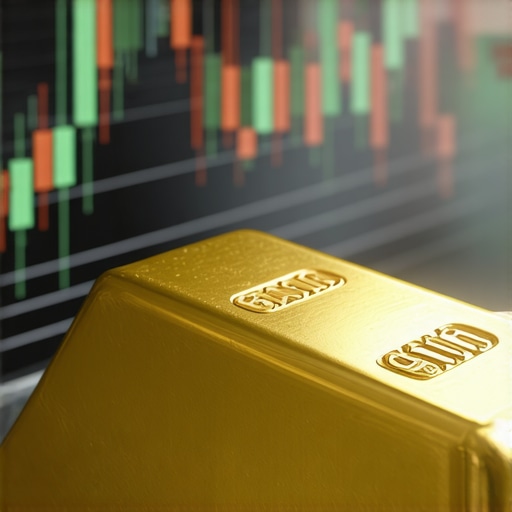Understanding Gold Supply and Demand Dynamics
Gold has long been viewed as a safe-haven asset, especially during times of economic uncertainty. Understanding the supply and demand trends that influence gold prices is crucial for investors looking to make informed decisions. This article delves into the critical factors that shape gold supply and demand, providing insights necessary for successful gold investment strategies.
The Role of Gold Supply in Market Dynamics
The supply of gold is primarily driven by mining production and recycling. Mining operations around the world extract gold from the earth, which contributes to the overall supply. Factors such as mining costs, geopolitical stability, and technological advancements can significantly impact production levels. For instance, a rise in extraction costs can lead to reduced output, tightening supply and potentially raising prices. Moreover, recycling plays a significant role. When gold prices soar, more individuals and businesses are likely to sell their gold, increasing the available supply in the market.
Factors Affecting Gold Demand
On the demand side, several key factors come into play, including jewelry consumption, industrial use, and investment demand. Jewelry remains the largest component of gold demand, particularly in countries like India and China, where cultural traditions favor gold adornments. Furthermore, during periods of economic instability, investors flock to gold as a hedge against inflation and currency devaluation, driving up demand.
Investment demand can also be influenced by the performance of other asset classes including stocks and bonds. For example, when equities are volatile, many investors turn to gold for stability. Understanding these demand dynamics helps investors anticipate shifts in market behavior.
The Impact of Central Banks on Gold Prices
Central banks play a pivotal role in the gold market, as their policies can significantly influence both supply and demand. When central banks purchase gold, they increase demand, thereby impacting prices. Additionally, central banks often hold gold as part of their reserves, viewing it as a safeguard against economic turmoil. This relationship highlights the importance of monitoring central bank activities when analyzing gold market trends.
Analyzing Gold Supply and Demand Trends for Investment Decisions
To effectively analyze gold supply and demand trends, investors should consider various sources of market data, including mining reports, economic forecasts, and geopolitical news. Tools such as price trend analysis can aid in making data-driven decisions. Furthermore, understanding demand trends can help investors align their strategies with market movements.
In conclusion, mastering the intricacies of gold supply and demand trends is essential for any investor seeking to navigate the complexities of the gold market. By staying informed about these dynamics, investors can position themselves for success in their gold investment endeavors.
Exploring Key Factors Influencing Gold Prices
Gold prices do not fluctuate in isolation; they are affected by a myriad of factors that every investor should understand for successful investment in gold. Analyzing these key factors helps investors to make strategic decisions that align with market movements.
Global Economic Indicators and Their Impact on Gold Prices
Economic indicators such as inflation rates, interest rates, and currency strength play a crucial role in determining gold prices. Generally, when inflation rises, gold is perceived as a reliable hedge against inflation. As a result, demand for gold tends to increase, driving prices higher. Conversely, when the economy is stable and interest rates rise, investors may prefer interest-bearing assets over gold, potentially leading to a decrease in gold demand.
The Influence of Geopolitical Events on Gold Market Trends
Geopolitical stability directly impacts gold prices, as uncertainty tends to drive investors towards safe-haven assets. Events such as wars, trade disputes, and political unrest can lead to a surge in gold prices as investors seek to protect their assets. Moreover, monitoring central banks and their policies is essential, as their actions can significantly influence market confidence and demand for gold.
Currency Strength and Gold Prices
The strength of the U.S. dollar is another significant factor affecting gold prices. Typically, gold is inversely related to the dollar’s value; when the dollar weakens, gold becomes more affordable for investors holding other currencies, which can boost demand. Therefore, investors should keep a close eye on currency trends to gauge potential movements in gold prices. Understanding the relationship between the dollar and gold helps in making informed trading decisions.
Investment Trends: ETFs and Gold Stocks
Exchange-Traded Funds (ETFs) and gold stocks also play a vital role in shaping the gold market. As more investors move towards gold ETFs, which offer a convenient way to invest in gold without having to buy physical gold, the demand for the underlying asset increases. Additionally, investing in gold mining stocks can provide exposure to gold prices while also offering growth potential. Understanding how to navigate these investment vehicles is crucial for maximizing returns in the gold market. For detailed guidance, refer to top gold stocks.
In summary, recognizing the key factors influencing gold prices is essential for making informed investment decisions. By analyzing economic indicators, geopolitical events, currency strength, and investment trends, investors can develop strategies that enhance their success in the gold market.
Understanding Gold Supply and Demand Dynamics
The intricate relationship between supply and demand is fundamental in determining gold prices. When demand for gold rises, particularly from industries such as jewelry or technology, prices tend to increase. Conversely, an oversupply in the market can lead to price drops. Investors should analyze trends in gold demand, such as seasonal buying patterns and emerging markets, to make informed decisions. For more insights into how demand influences prices, check out essential insights on gold demand trends.
The Role of Gold Reserves in Price Stability
Gold reserves held by central banks play a critical role in stabilizing gold prices. Countries with substantial gold reserves often influence market confidence and prices through their buying or selling actions. As central banks continue to add gold to their reserves, it can enhance demand and positively affect prices. Investors should monitor central bank policies and announcements to gauge their potential impact on gold market stability. Understanding how central banks interact with gold is crucial for savvy investors.
Technological Advancements and Their Impact on Gold Demand
Technological advancements have also led to an increase in gold demand in various industries. For example, the electronics sector utilizes gold for its excellent conductivity and corrosion resistance. As technology continues to evolve, the need for gold is likely to grow, influencing its market price. Keeping abreast of technological trends that may affect gold usage can offer investors additional insights into potential price movements.
Investor Behavior and Market Sentiment
Investor behavior significantly affects gold prices, as market sentiment can lead to rapid price changes. During periods of uncertainty, investors often flock to gold as a safe-haven asset, causing a spike in prices. Understanding market psychology, including fear and greed cycles, can help investors anticipate price fluctuations. For strategies on navigating market sentiment, refer to top gold trading techniques.
Long-term vs. Short-term Investment Strategies
Deciding between long-term and short-term investment strategies is essential for gold investors. Long-term investors may focus on fundamental factors influencing gold prices, such as economic indicators and geopolitical stability, while short-term traders might capitalize on market volatility. Understanding your investment goals and risk tolerance can help in choosing the right strategy. For those new to investing, this beginner’s checklist can provide valuable guidance.
In conclusion, comprehending the multifaceted dynamics of the gold market is vital for making informed investment decisions. By analyzing the supply and demand factors, central bank activities, technological influences, and investor behavior, one can formulate effective strategies that enhance gold investment outcomes.
Factors Influencing Gold Price Fluctuations
The gold market is affected by a myriad of factors that influence price fluctuations. Understanding these elements is critical for investors aiming to make informed decisions. Economic data, geopolitical tensions, and changes in currency values can all create ripples in gold prices. For instance, when the US dollar weakens, gold often becomes more attractive to investors, driving up its price. Keeping an eye on how global events impact gold prices can provide valuable insights.
Inflation and Its Relationship with Gold Investments
Gold is widely regarded as a hedge against inflation. When inflation rates rise, the purchasing power of currency declines, prompting investors to turn to gold as a store of value. This trend can lead to increased demand and higher prices. For those interested in exploring this dynamic, understanding key insights on gold as an inflation hedge is crucial.
Market Trends: Seasonal Demand and Its Effects
Seasonal patterns also play a significant role in gold demand. For example, gold purchases typically spike during certain festivals and wedding seasons in countries like India and China. Investors should be aware of these seasonal trends as they can significantly affect gold prices. By analyzing detailed trends in gold demand, savvy investors can better anticipate market movements.
The Impact of Global Economic Conditions
Global economic stability or instability can greatly influence gold prices. During economic downturns, investors often flock to gold as a safe-haven asset, driving prices higher. Conversely, when the economy is booming, demand for gold may decline. Understanding the nuances of current market trends can help investors navigate these fluctuations effectively.
Gold Mining Stocks vs. Physical Gold Investments
Investors can choose between investing in gold mining stocks or physical gold. Each option has its pros and cons. Gold mining stocks can potentially offer higher returns but come with associated risks, such as operational challenges and market volatility. On the other hand, physical gold provides a tangible asset that can serve as a hedge against economic uncertainty. For a comprehensive understanding of both investment avenues, consider exploring the pros and cons of gold mining stocks.
Ultimately, a well-rounded investment strategy should encompass an understanding of market dynamics, seasonal trends, and the various ways to invest in gold. By integrating these insights, investors can optimize their gold investment strategies for better outcomes.
Comprehensive FAQ Section on Gold Investments
What factors affect the price of gold?
The price of gold is influenced by various factors including inflation rates, currency values, global economic conditions, and seasonal demand patterns. Geopolitical tensions can also drive investors towards gold, impacting its price significantly.
Is gold a good investment during inflation?
Yes, gold is often viewed as a hedge against inflation. When inflation rises, currency purchasing power declines, leading investors to turn to gold as a stable store of value, which typically drives demand and prices higher.
How do seasonal trends impact gold demand?
Seasonal trends play a crucial role in gold demand, particularly during festivals and wedding seasons in countries like India and China. These periods often see spikes in gold purchases, which can lead to increased prices in the market.
What is the difference between gold mining stocks and physical gold?
Gold mining stocks represent shares in companies that extract gold, potentially offering higher returns but also facing operational risks. Physical gold, on the other hand, is a tangible asset that provides security and can hedge against economic instability.
How can I effectively invest in gold?
To invest effectively in gold, it’s essential to consider a diversified strategy that includes both physical gold and gold-related assets like mining stocks or ETFs. Understanding market dynamics and keeping abreast of economic changes can also enhance investment decisions.
What are the risks involved in investing in gold?
Investing in gold carries risks such as price volatility, market fluctuations, and liquidity issues, especially with physical gold. It’s important for investors to conduct thorough research and consider their risk tolerance before investing.
How does currency value affect gold prices?
When the value of the US dollar declines, gold becomes cheaper for investors using other currencies, often resulting in increased demand and higher prices. Conversely, a strong dollar may lead to lower gold prices.
What are the best ways to buy physical gold?
Physical gold can be purchased through various means including local jewelers, online retailers, and bullion dealers. It’s crucial to ensure that purchases come from reputable sources to avoid scams and ensure the quality of the gold.
How can I track gold prices effectively?
Investors can track gold prices through financial news websites, dedicated gold price tracking apps, and market analysis platforms. Staying updated on market trends and economic news can also provide insights into future price movements.
Authority Resources for Gold Investment Knowledge
For further reading and to enhance your understanding of gold investments, consider these trusted resources:
- World Gold Council – This organization provides comprehensive research and insights on the gold market, including supply and demand trends.
- BullionVault – A reputable platform for buying and selling physical gold, offering valuable market information and resources for investors.
- Kitco – Kitco is a well-known resource for precious metals, offering real-time prices, market news, and expert commentary.
- Investing.com – This site provides extensive tools and resources for tracking gold prices and market trends.
- Forbes – Forbes regularly publishes articles and analyses on gold investments and financial markets, providing insights from industry experts.
Conclusion
Investing in gold can be a rewarding endeavor when approached with the right knowledge and strategies. By understanding the factors influencing gold prices, recognizing seasonal demand patterns, and exploring various investment avenues, investors can optimize their strategies for success. Whether you are considering physical gold or gold mining stocks, thorough research and awareness of market dynamics are essential. Leverage authoritative resources and stay informed to make the most of your gold investments.











The detailed breakdown of how gold supply and demand influence prices really helped me understand the complexity behind gold investments. I especially found the section on central banks’ role enlightening since their buying and selling actions can either stabilize or destabilize the market. From my experience, keeping an eye on geopolitical events and currency fluctuations has been crucial too since those external variables often cause sudden spikes or drops in gold prices. Additionally, the part about technological advancements driving demand for gold in electronics is an angle I hadn’t considered before. It’s fascinating how multifaceted the gold market is, from seasonal buying trends in emerging markets to investment vehicles like ETFs and mining stocks. For anyone looking to invest in gold, taking a holistic approach by considering all these factors and using authoritative resources, like the World Gold Council or Kitco, seems like the smartest move. This article reinforces the idea that gold investment is about more than buying when prices are low—it’s about understanding market sentiment, economic indicators, and global events that shape those price movements.